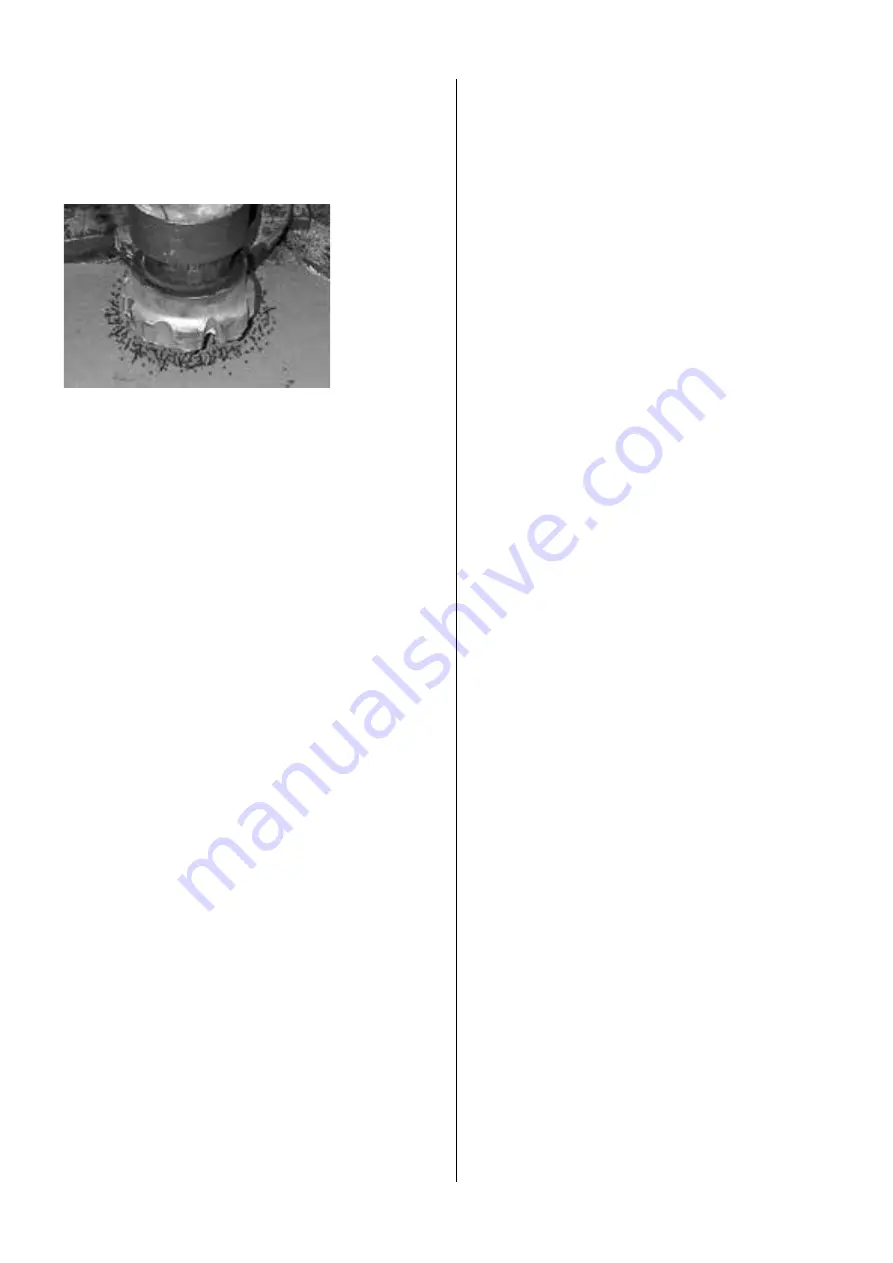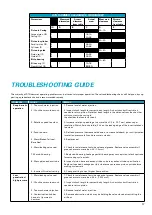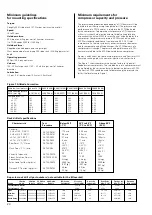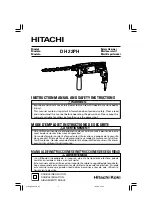
9
The cardboard or wood will become wet with oil when an
adequate film of oil has been developed. If a drill string has not
been used for some time and the oil has dried out it is suggested
that a cup of oil be poured into each rod to assist in developing
an oil film. After drilling with high levels of water injection it is
important to note that any oil film has probably been washed off.
For operators that switch from wet to dry drilling (i.e. waterwell
and quarry) it’s important to redevelop the oil film.
Water injection
Water injection can cause a DTH hammer to either consume
more air (hold a lower pressure) or less air (hold a higher
pressure) depending on the volume of fluids injected. For
example, if a DTH hammer is lubricated with oil and water is
then injected at a low rate (less than 1 gpm (3.8 lpm)), the oil film
which is sealing the internal leak paths is washed out and air
consumption will increase (pressure will fall).
Conversely, if water is injected at a high rate (more than 3 gpm
(11.4 lpm)) the fluid level will be sufficient to seal the leak paths
and restrict the flow of air through the DTH hammer. In this case
the air consumption will decrease (pressure will increase).
The pressure rise associated with water injection can sometimes
exceed the maximum pressure rating of a compressor. In these
cases the Airselect system must be adjusted to a higher flow
setting.
The use of water, while required in most cases, does reduce
component life. The following lists some of the problems that
water injection can cause:
•
Poor quality water can either be corrosive or can carry
contamination into the drill. Premature wear or corrosion
related failures can result. All water injected into a DTH
hammer should be neutral in pH and free from particulate
contamination.
•
Water injection reduces drill performance considerably.
Water restricts the flow and resultant pressure in working
chambers of the drill and reduces face cleaning which
causes regrinding of cuttings.
•
Water present at the impact face causes cavitation of the bit
and piston and jetting or cutting of the exhaust tube. In both
cases component life is reduced.
A DTH hammer that has been operated with water injection
and will be idle for more than a few days should be dried out
and lubricated with oil. This can be accomplished by blowing
lubricated air through the tool when drilling is finished.
DRILL OPERATION
Drilling with foam
In certain drilling situations, it may be advantageous to use foam
to improve hole cleaning and control backpressure. Use of a
heavy (shaving cream consistency) foam can suspend drilled
cuttings and allow them to be removed from the bore hole at
bailing velocities much lower than when depending on air flow
alone. Foam can also entrain and suspend formation water in
instances of high water inflows, reducing backpressure on the
drill.
Atlas Copco DTH hammers are compatible with all commonly
available foaming compounds. Modern drilling foams are non-
corrosive, but their effects create an environment suited to rapid
corrosion of drill parts. The use of foam with a DTH hammer
requires extra care to maximize drill performance and life.
•
Foam, being basically soap, breaks down rock drill oil which
can cause lubrication problems in the drill. Increase oil
injection rates when drilling with foam.
•
As foam passes through the drill, bubbles are created and
destroyed. This action polishes the steel parts, making them
more susceptible to corrosion.
•
When drilling activity stops, the oil film normally present
has been removed. This leaves the internal parts of the
hammer without corrosion protection.
When drilling with foam is completed, all foam residues must
be removed from the inside of the drill, and the parts must be
coated with oil. Failure to do so will result in rapid corrosion of
the internal parts and rapid wear when drilling resumes. The
following procedure is recommended if the hammer is down for
a day or two:
•
With the drill in blow position, shut off foam delivery and
blow air with a large quantity of water through the hammer
for several minutes.
•
Shut off the water and continue to blow lubricated air
through the hammer until a good flow of oil is seen at the
bit.
•
For best results, clean the hammer at the end of each day.
If the hammer is to remain unused for an extended period,
it is recommended that the DTH hammer be disassembled,
cleaned, oiled and reassembled before storage.
Collaring
Collaring a drilled hole is a critical stage of the drilling process. In
blast holes it can determine the quality of the top of the hole and
the ability to load a charge. In foundation and well drilling it can
determine the overall straightness of the completed hole.
It is suggested that a drill be collared with low pressure and
feed until the hole has stabilized. Just as a twist drill needs to be
controlled carefully when drilling with an electric hand drill, a
DTH hammer needs to be started with care.
Rotation speed
Rotation speed directly affects the amount of angular index the
bit inserts go through from one impact to the next. The optimum
amount of index is dependent on variables such as blow energy
(pressure), rock hardness, bit diameter, etc. The ideal rotation
speed produces the best overall balance of penetration rate,
bit life and smoothness of operation. It generally occurs when
cuttings are their largest.










































